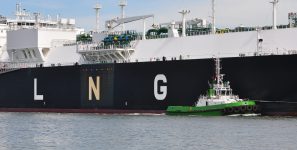European Imports of Dates Surge over $430M
IndexBox has just published a new report: ‘EU – Dates – Market Analysis, Forecast, Size, Trends and Insights’. Here is a summary of the report’s key findings.
European date imports jumped from 137K tonnes in 2019 to 157K tonnes in 2020. In value terms, imports soared to $437M. France, Germany, the Netherlands, Italy, Spain and Belgium constitute the largest date importers in the EU, with a combined 82%-share of the European imports. Last year, the Netherlands featured the most rapid growth rate regarding the import volume in physical terms. In 2020, the date import price in the EU remained relatively unchanged compared to the figures of 2019.
Imports of Dates in the EU by Country
In 2020, approx. 157K tonnes of dates were imported in the EU; growing by +14% compared with 2019 figures. In value terms, date imports skyrocketed by +15.7% y-o-y to $437M (IndexBox estimates) in 2020.
In 2020, France (50K tonnes), distantly followed by Germany (29K tonnes), the Netherlands (17K tonnes), Italy (12K tonnes), Spain (12K tonnes) and Belgium (8K tonnes) represented the main importers of dates, together creating 82% of total imports. Denmark (5K tonnes) occupied a little share of total imports.
In 2020, the most notable rate of growth in terms of purchases, amongst the leading importing countries, was attained by the Netherlands, while imports for the other leaders experienced more modest paces of growth.
In value terms, the largest date importing markets in the EU were France ($115M), Germany ($81M) and the Netherlands ($66M), with a combined 60% share of total imports.
In 2020, the date import price in the EU amounted to $2,791 per tonne, remaining constant against the previous year. In 2020, it increased by +1.3% y-o-y. Prices varied noticeably by the country of destination; the country with the highest price was the Netherlands ($3,796 per tonne), while France ($2,275 per tonne) was amongst the lowest. In 2020, the most notable rate of growth in terms of prices was attained by Italy, while the other leaders experienced more modest paces of growth.
Source: IndexBox Platform





Leave a Reply